
Looking for the best 144hz monitor available right now, but have no idea what you need to be looking for, specifically? We’ve got you covered here.
If you’re in the market for a new monitor and want a gaming experience that’s buttery-smooth and crystal clear, these are the best 144Hz monitors you can buy right now.

|
Amazon Customer Reviews
|
Price: $499.00 Shop at Amazon | Shop now Read our review |
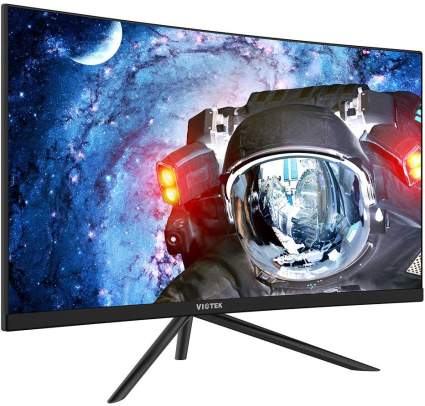
|
Amazon Customer Reviews
|
Price: $349.99 Shop at Amazon | Shop now Read our review |
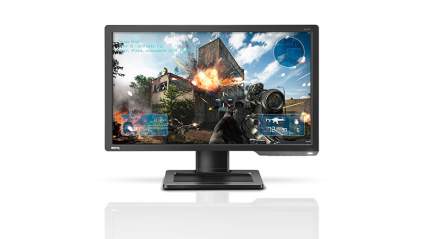
|
Amazon Customer Reviews
|
Price: $349.99 Shop at Amazon | Shop now Read our review |
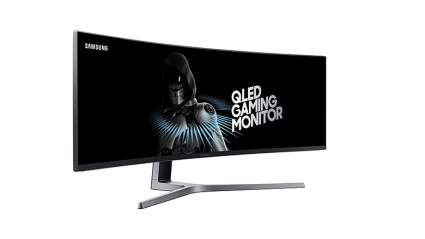
|
Amazon Customer Reviews
|
Price: $1,499.95 Shop at Amazon | Shop now Read our review |
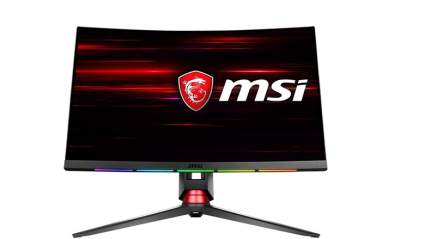
|
Amazon Customer Reviews
|
Price: $799.99 Shop at Amazon | Shop now Read our review |
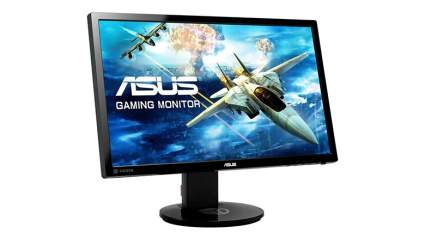
|
Amazon Customer Reviews
|
Price: $286.99 Shop at Amazon | Shop now Read our review |
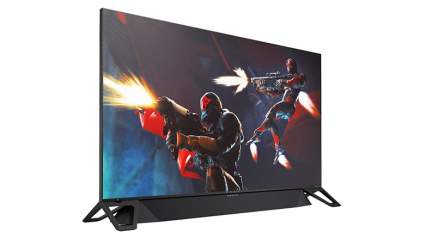
|
Amazon Customer Reviews
|
Price: $4,490.40 Shop at Amazon | Shop now Read our review |
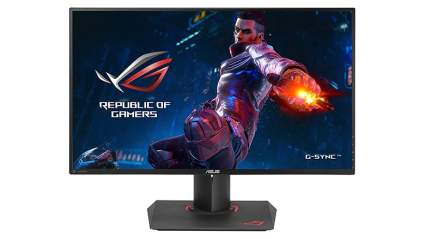
|
Amazon Customer Reviews
|
Price: $799.99 Shop at Amazon | Shop now Read our review |
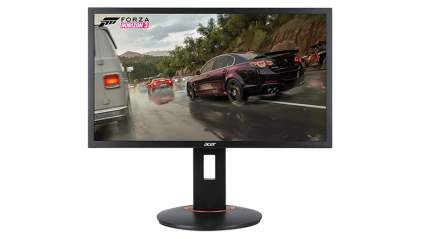
|
Amazon Customer Reviews
|
Price: $209.99 Shop at Amazon | Shop now Read our review |
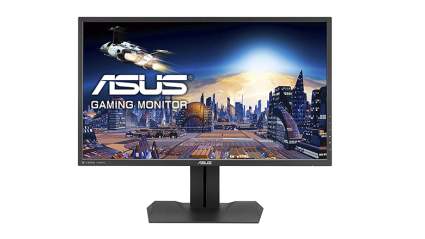
|
Amazon Customer Reviews
|
Price: $699.99 Shop at Amazon | Shop now Read our review |
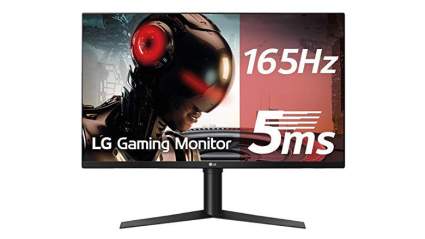
|
Amazon Customer Reviews
|
Price: $249.00 Shop at Amazon | Shop now Read our review |
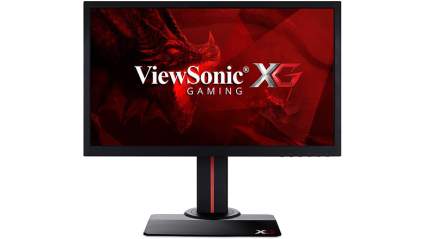
|
Amazon Customer Reviews
|
Price: $295.00 Shop at Amazon | Shop now Read our review |
-
1. Acer Predator XB271HU
Pros:- G-Sync support
- Good viewing angles
- Fast response time
Cons:- Low contrast ratio
- No HDR support
- Higher price tag
If not for the low contrast ratio of 1,055:1, questionable handling of black shades, and lack of HDR support, the Acer Predator XB271HU could have been close to the perfect 144Hz gaming monitor. While not perfect, it is a suitable option if you don’t mind spending quite a bit on your display.
The IPS panel is mostly to blame for the low contrast, but it’s easy to overlook thanks to G-Sync compatibility, large viewing angles, and great handling of motion blur. The 27” Acer Predator display doesn’t play around when it comes to response time, and at 2.8ms, it’s pretty high up there. Coupled with low input lag, you have a gaming experience that’s fluid, crisp, and relatively blur-free.
With some tweaking out of the box, the 1440p display produces vibrant images that bring your favorite digital worlds to life. Though they could have been even more brilliant with HDR support, the Acer Predator XB271HU works well in most environments.
Find more Acer Predator XB271HU information and reviews here.
-
2. Viotek GN27DB 1440p
Pros:- Huge
- Red Aura
- Low Blue Light
Cons:- 4ms isn't 1ms
- Only red color option for lighting (can't pick your own color)
- Not made for smaller desks
If you’re looking for a great bigger-screen 144Hz monitor for your nightly gaming, go with the Viotek GN32DB 32-inch curved gaming monitor. I call mine Big Bertha because she takes up quite a bit of the desk in my office – but that’s okay! She’s gorgeous, and I wouldn’t have it any other way.
It also uses Automatic Overdrive that guarantees an ultra-smooth 4ms response time.
The Viotek GN32DB also has many viewing modes pre-programmed in, and it has FreeSync capabilities to minimize screen tearing. It also has a cool red glow on the back of it to provide some ambient lighting.
What I like best about it, actually, isn’t even the 144Hz refresh rate. I actually really appreciate its Low Blue Light setting that’s much easier on the eyes during my day-to-day writing and emailing and all that jazz.
-
3. BenQ ZOWIE XL2411P
Pros:- Response time is near-instant
- Very minimal reflection
- Motion blur is nearly nonexistent
Cons:- Better suited for competitive gamers
- No variable refresh rate
- Poor image quality when viewed at an angle
There is a reason why BenQ’s ZOWIE’s displays are widely used for eSports tournaments. By implementing a VA panel, BenQ sacrifices visual quality for performance that delivers incredible response times with an impressively low input lag. The trade-offs include poor viewing angles and black shades that look more like tones of gray.
Despite its shortcomings, the 24” ZOWIE sports a 1080p resolution and runs at a smooth 144Hz. The simple design makes it easy to fit in many PC gaming setups without having to mount or shift things around.
Right out of the box, the ZOWIE XL2411P needs some work, but after some calibration, gamers can enjoy reduced motion blur, an absence of color bleeding, and great handling of gradients. When it comes to the latest visually stunning AAA games, how a monitor handles colors can make or break the experience. The ZOWIE may suffer in some basic areas, but there’s no doubt that you’ll enjoy a colorful, smooth image with no lag issues. In the world of competitive gaming, it doesn’t get much more important than that.
-
4. Samsung CHG90
Pros:- Supports AMD’s FreeSync variable refresh rate
- Handles black shades near-perfectly
- Relatively no motion blur or input lag
Cons:- 1080p resolution could be more vibrant
- There are better performing monitors for cheaper
- Suffers from the occasional image flicker
A curved monitor may not be the route to go when you’re looking for decent viewing angles, but the Samsung CHG90 makes up for this common issue with its 49” ultrawide monitor. For more casual players with limited space, the curved monitor may prove to be difficult to place. Its large base and oversized width provides plenty of screen space but won’t fit just anywhere.
If you do have the room, you’ll benefit from a VA monitor that utilizes AMD’s FreeSync variable refresh rate for nearly blur-free gaming. An impressive native contrast ratio of 3756:1 helps display black tones as they’re meant to be seen. Survival horror fans will find this to be most important.
Samsung’s CHG90 offers HDR capabilities and low input, so not only will your games look good, they’ll play well, too. You’ll have a multitude of hookup options with 2 HDMI ports, a mini DisplayPort, a standard DisplayPort, and 2 USB slots. The ultrawide monitor is an attractive unit, but gamers that notice every fine detail may spot the infrequent image flicker.
-
5. MSI Optix MPG341CQR
Pros:- VA panel is better suited for gaming
- Ample ports, including USB-C and DisplayPort
- FreeSync compatibility (for AMD users)
Cons:- Low-grade HDR400 certification
- Very expensive
- 21:9 aspect ratio isn’t widely supported across games
Some players may not appreciate the 21:9 aspect ratio, but the curved display does the 1440p resolution quite a bit of justice. If the larger field-of-view is a turnoff, then maybe the Optix’s 3,000:1 contrast ratio, FreeSync compatibility, and 1ms response time will make up for its relatively minor pitfalls.
Though going for a TN panel would have been best for MSI’s 34” Optix panel, the VA display provides gamers with a visually striking experience that’s not something to complain about. Sure, you’ll be shelling out quite a bit for the Optix’s overall performance and abundance of features, but what you do get with this 144Hz monitor is well worth the dough.
With the MSI Optix MPG341CQR, gamers benefit from features like a NightVision mode that improves contrast in darker scenes, ample customization via built-in software, and sufficient ports (including a USB-C for gaming laptops). The 34” MSI Optix may stumble with low-grade HDR technology, but the 1440p, 144Hz VA panel is designed for performance and image quality so you can enjoy a mostly blur-free gaming experience.
-
6. ASUS VG248QE 24″
Pros:- Inexpensive display
- Performance promotes fluid motion and smooth screen refresh
- Handles colors well with little calibration needed
Cons:- Limited viewing angles
- No USB or analog video ports
- Image quality is not as good as higher-end TN panels
The TN panel of the ASUS VG248QE may leave some things to be desired when it comes to overall visual quality, but what it lacks in impressive visuals it makes up for in performance. The 144Hz display features a fast pixel response to prevent color bleeding and motion blur that would otherwise prevent crisp and fluid on-screen action.
Better suited for competitive gaming, the 24” ASUS is attractive but delivers more with its 1ms response time and virtually absent lag input. ASUS’s inexpensive monitor handles colors well before and after calibration, though its handling of black uniformity is a downgrade from some other TN panels.
An adjustable stand that doesn’t take up much real estate gives you the motion needed for a comfortable display while port placement is convenient and easy to reach. Speaking of ports, while the VG248QE features the staple digital inputs, including HDMI and DisplayPort, it lacks USB connectivity and analog video inputs. For players not looking for any bells and whistles, they’ll get everything they need from this affordable, simplistic display.
-
7. HP Omen X Emperium 65
Pros:- Peak performance delivers high-quality images
- HDR option for compatible games
- G-Sync enabled
Cons:- 4ms response time is slower than many cheaper monitors
- Among the most expensive monitors
- Large size is hard to work into most spaces
For gamers that love more surface area to look at, the HP Omen X 65 is a powerhouse of a display. Sure, it may take up most of even the biggest desks, but the vibrant imagery, impressive built-in soundbar, and G-Sync compatibility may be worth the sacrifice.
The 65” Emperium is more like a TV than a PC gaming monitor, but it has all the features experienced gamers want out of the latter. Response time of 4ms may be slower than some cheaper 144Hz monitors, but the refresh rate and G-Sync help make up for it. Local dimming, ample backlighting, the option for HDR gaming, and unparalleled color accuracy further enhance this oversized package.
That’s not to say these features don’t come at a cost, however. Unfortunately, it’s quite the cost as the Emperium is among the most expensive monitors on the market. Even at its price, there are some quirks like an awkward remote and menu that make it a hassle to use. Alternatively, gamers will surely make use of the GeForce Now streaming service and the GameStream functionality that allows streaming from another PC to this UHD display.
Find more HP Omen X Emperium 65 information and reviews here.
-
8. ASUS ROG Swift PG279QZ
Pros:- Low input lag
- G-Sync enabled
- Good viewing angles
Cons:- Awkward port placement
- No HDR support
- Contrast ratio could be better
The PG279QZ is a high-end gaming monitor with good viewing angles and a price tag that doesn’t hurt as much as it could.
Being an IPS monitor, you know you’re going to get a quality image with the ASUS Republic of Gamers Swift PG279QZ, but the 27” display will take a small hit when it comes to motion blur and response time. While some IPS monitors can have a noticeable difference with input lag and image fluidity, the Swift PG279QZ is designed to be better than its competition.
Response time of 3.4ms is only slightly slower than many VA or TN panels, and the motion blur prevention, while not perfect, is a step above many thanks to G-sync support. As for input lag, at its native resolution, you’ll see approximately 4.4ms. It could be better, but not by much. If you need something to gripe about, maybe it can be the slightly awkward placement of its USB 3.0, HDMI, and DisplayPort ports. You also won’t benefit from a USB-C port or mini DisplayPort plug-in.
Find more ASUS ROG Swift PG279QZ information and reviews here.
-
9. Acer XFA240
Pros:- Surprisingly cheap for the quality
- G-Sync and FreeSync enabled
- Looks great out of the box
Cons:- Poor viewing angles
- Gamma could use some improvements
- No USB ports
Not only does this 24” gaming monitor come with G-Sync compatibility, but it’s also capable of working with AMD’s FreeSync. Motion-free gaming is the high point of the XFA240 regardless of whether you’re using an Nvidia or AMD GPU. The inexpensive unit is among the best in its class, providing impressive color accuracy despite a lower density of pixels. If you have the eye for gamma, you may notice the monitor doesn’t handle it the best, but some tweaking in the settings can mostly rectify that.
Though monitors that feature G-Sync support generally see a drastic increase in price, the Acer XFA240 24” panel is able to keep the cost down while delivering a high-quality image and gaming experience. Despite being a TN panel, the XFA240 provides owners with a crisp, crystal clear picture produced by the 1080p display.
There is no doubt that higher-end monitors can deliver a better experience than the XFA240, but for its price, it’s hard to ignore everything it gets right. Competitive and casual players will enjoy the many features of this 24” monitor and will find themselves sucked into the vibrant worlds in front of them.
-
10. ASUS MG279Q
Pros:- FreeSync compatibility
- IPS panel offers a range of viewing angles
- Crisp image displayed at a vibrant 1440p
Cons:- High input lag
- Poor color handling
- Built-in speakers are a waste
When you’re shopping for a new monitor, don’t concern yourself with built-in speakers. Rarely are they anything but tinny, as the speakers built within the ASUS MG279Q shows. Instead, look at the monitor’s other features, like this 27” display’s variable refresh rate technology, impressive viewing angles, and delicate handling of motion blur.
The ASUS MG279Q is not short of benefits, from its physical build that offers multiple USB 3.0 and one DisplayPort ports, to the internal workings, like the 1440p IPS panel and 144Hz refresh rate. The MG279Q gets a few negative marks for its poor handling of colors and a 27.4ms input lag, which is quite a bit higher than what you want for gaming.
However, ASUS’ 27” panel offers a sharp image that casual gamers are going to love. As for more competitive players, it’s all about that reduced motion blur and FreeSync technology.
-
11. LG 27GL850
Pros:- G-Sync variable refresh rate
- Overclocks to 165Hz
- 2622:1 contrast ratio
Cons:- Response time could be a little shorter
- Viewing angles are among the worst
- No HDR support
Want a quality 4K monitor that offers a virtually blur-free gaming experience? Then you’ll want to set your sites on LG’s 27” VA panel. This LCD panel serves as a decent middle-ground option that won’t break the bank while still delivering on higher-end features that lend for a quality image.
Built with G-Sync variable refresh rate enabled, you’ll be able to enjoy even the fastest games without a reduction in image quality. The 2.8ms response time isn’t the best, but it’s very close and beats out some of the more expensive 144Hz gaming monitors. Low input lag makes this a suitable option for competitive gamers, while its performance with dark scenes is great for those slow-burn horror titles.
That’s not to say the 27GL850 isn’t primed for brighter games, though you should prepare yourself for below-average viewing angles. Out of the box, the 27” LG VA panel needs some work, but with some tweaking, you’ll be sitting pretty in front of a screen that puts quality first.
-
12. ViewSonic XG2402
Pros:- FreeSync compatibility
- Excellent handling of motion blur
- Lower pricing makes it accessible
Cons:- 947:1 contrast ratio is below average
- Handling of black tones is disappointing
- Small screen may put off some gamers
Whether or not this TN panel works for you depends on whether a crystal clear image supported by FreeSync variable refresh rate is what you’re looking for. Considering you’re a gamer, there’s a really good chance that both of those features are exactly what you want.
Compatible with both Nvidia and AMD GPUs, the ViewSonic XG2402 is a versatile display that’s sure to deliver the performance you need. Though it tops out at 1080p, the monitor’s size is small enough so that the image looks brilliant and colorful. Though the contrast ratio is considerably low at 947:1, which hinders the look of black shades, the panel has no issue with reproducing vibrant colors, especially thanks to its handling of gradients and color bleeding.
With a response time topping out at about 2.3ms and low input lag, the ViewSonic XG2402 delivers a mostly blur-free experience. If you’re a competitive gamer that isn’t too concerned with higher resolutions and better handling of dark settings, you’ll find you can make great use of this screen.
RELATED: Best Portable Monitors
How much you enjoy a game is dependent on several factors. A big part of it has to do with the game’s development, primarily its story, how well it plays, and how good it looks. While you have no control over story or gameplay, you do play at least somewhat of a role in its visual appeal. Granted, if it’s not a graphically impressive game, there’s little you can do, but with a title built to be vibrant and visually stunning, having the proper monitor can mean all the difference.
Too often, PC gamers spend their time looking at one aspect of their future monitor - the resolution. From 1080p to 4K, there’s a vast array of PC gaming monitors out there that will display a bright, colorful image. The thing is, the panel’s resolution is only a part of the equation. Another big piece is the refresh rate, or how often the display refreshes per second. The higher the refresh rate, the less motion blur you see. What you’ll have is a crystal clear image that best utilizes that high resolution, especially if you spring for one of the best 144Hz monitors available right now — that is, a display that refreshes 144 times per second.
Factors to Consider When Buying a 144Hz Monitor
Since you’ll be spending a pretty penny on your next 144Hz gaming monitor, you will want to make sure you’re getting the best that money can buy. Below is a breakdown of the different factors you’ll want to consider. It’s important to understand what you’re shopping for, especially when it comes to a monitor’s more technical aspects.
Panels
The 144Hz monitors you find are all going to be made with LCD panels, but the question you need to answer is what kind of LCD panel. There are three types that differ in quality and capabilities - Twisted Nematic (TN), In-Plane Switching IPS), and Vertical Alignment (VA).
What Are TN Panels?
The most basic of these is a TN panel, which is the least expensive and offers the fastest response time. As gaming is all about being quick, TN panels are often the go-to type of LCD for players, both professional and casual. For that response time, the monitor suffers in quality and has noticeable drops with viewing angles and the number of distinct colors it can display.
What are VA Panels?
VA panels are a mix of IPS and TN monitors, with mid-level quality, workable viewing angles, and a good range of colors. While VA panels are a joy to look at, gamers typically sacrifice response time for something that is far from the visual quality of an IPS panel.
What are IPS Monitors?
IPS monitors are at the high end of the spectrum and improve upon viewing angles and image quality. Their colors are the most vibrant and abundant, which makes this the perfect type of panel for users that require color precision, such as graphic artists. For gamers, an IPS monitor has a higher latency that can impede multiplayer gaming.
FreeSync vs. G-Sync
Have you ever been in the middle of playing and it looks like the image has split, as if your panel is displaying to different sections of the same game? That’s screen tearing, and it occurs when your frames per second and refresh rate don’t quite match up. While some games feature Vsync, which is a built-in option that helps sync FPS and frame rate together, there are GPU-specific options that are less taxing on your PC.
FreeSync and G-Sync are essentially the same things. They work with your GPU to prevent screen tearing and latency issues that can arise when your FPS and frame rate are out of sync. The most significant difference between the two was that FreeSync worked only with AMD GPUs, and G-Sync is designed specifically for Nvidia. However, Nvidia opened up the door for gamers in early 2019 to make its GPU compatible with FreeSync-enabled monitors.
AMD’s FreeSync is a bit more user-friendly than G-Sync, as the latter requires dedicated hardware in the monitor that can drive the price up. FreeSync only requires that your DisplayPort is up to current standards. While they serve the same purpose, the two technologies accomplish their task in different methods. G-Sync locks the frame rate at the monitor’s highest limit while FreeSync overdrives the video card to match the frame rate.
Knowing which does what or which is best likely doesn’t matter in the long run as you’ll be forced to consider monitors with the syncing technology that works with your GPU.
Resolutions vs Monitor Size
Resolution is likely the thing casual shoppers consider most when looking into the next best gaming monitor. The most popular resolutions of current screens are 1080p, 1440p, and 4K, which are a measure of the number of pixels vertically displayed on your screen. The general rule of thumb is the higher the resolution, the clearer the picture. However, there is a factor that needs to be considered when looking at resolutions - monitor size.
The average size of a gaming monitor ranges from 24” to 27”, as they provide the greatest field of vision without requiring you to sit too far back from the screen. If you’re pushing your resolution to 1440p or even 4K, you may find yourself underwhelmed when playing on a 24” monitor. However, you don’t really want to go above a 27” screen. Don’t forget that you likely have limited space on your desk, and larger screens require more surface area to fit.
Another thing to look at is whether the monitor is a widescreen (16:9) or ultrawide (21:9) monitor. Ultrawide panels may look great when you’re watching a movie, but for games, the wider field-of-view can be a detriment. If you have to pan your head from one side of the screen to the other, it’s possible that your monitor is just too big.
If you’re adamant about making your games look phenomenal on a large screen, double check your hardware’s resources. You may wind up pushing your PC beyond its limits, which will cause stuttering in the FPS and other performance issues.
Do You Need HDR?
Known as high-dynamic-range imaging, HDR functionality is a step toward making the images produced by your PC photorealistic. Not every 144Hz monitor is HDR compatible, but that’s not necessarily a bad thing. While HDR creates brilliant pictures and videos, it’s also a resource hog and can drive the price of a monitor up. There’s also the fact that not every game offers an HDR mode, meaning you could be shelling out more money for a feature you rarely use.
Where HDR first became "important" was when the Xbox One X was first announced and Microsoft started talking about its HDR capabilities. This made it seem like HDR was the next big thing, and while it's not a necessity like we thought it would be, it does make for a nicer picture. But is it worth shelling out the extra cash for a PC monitor? Probably not.
Monitor Response Time
All external components of your PC have a response time you have to consider. For monitors, response time refers to how quickly a pixel can change from black or white to shades of gray. Generally, the lower the response time, the better. When shopping for a 144Hz monitor, you’re likely to find that many fall between 1 to 4ms, depending on the type of panel.
Port Variety Is Important
Are you planning to use your monitor for multiple purposes or systems? Then you’re going to need a decent number of ports. When shopping for a monitor, be sure that it has the HDMI, DisplayPort, DVI, USB, and VGA ports you may need for it to be suitable for your needs.
You may also want to make sure they’re not awkwardly placed for your setup. For instance, if you’re mounting your monitor, you’ll need easy access to the ports without having to dismount the unit.
See Also